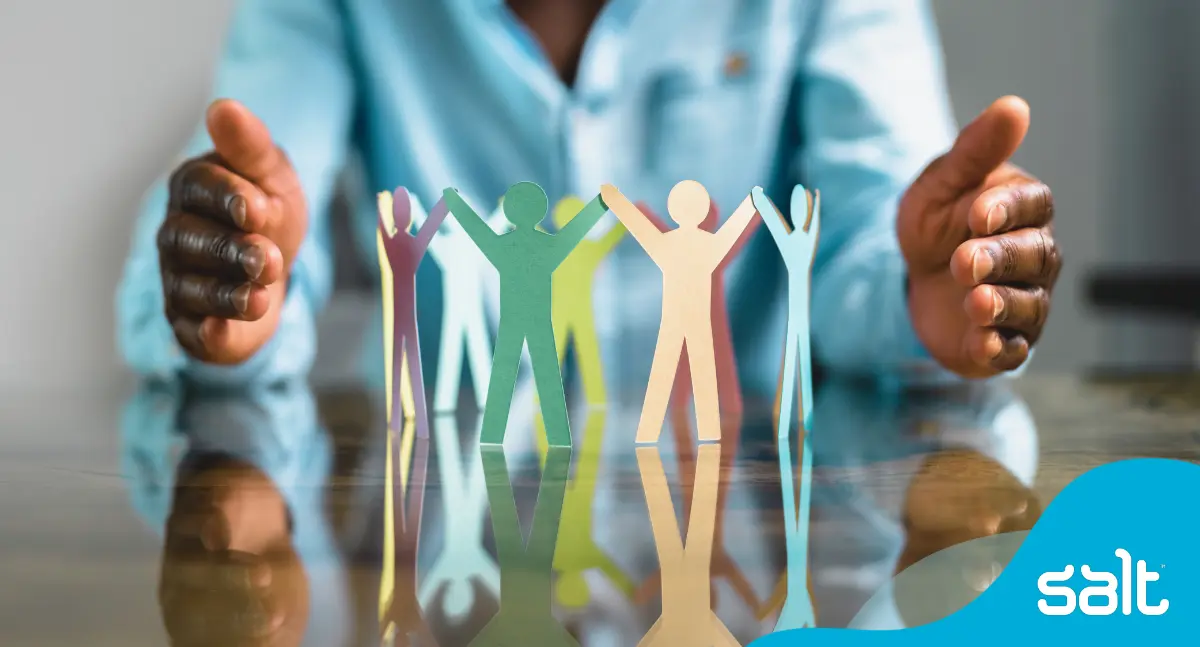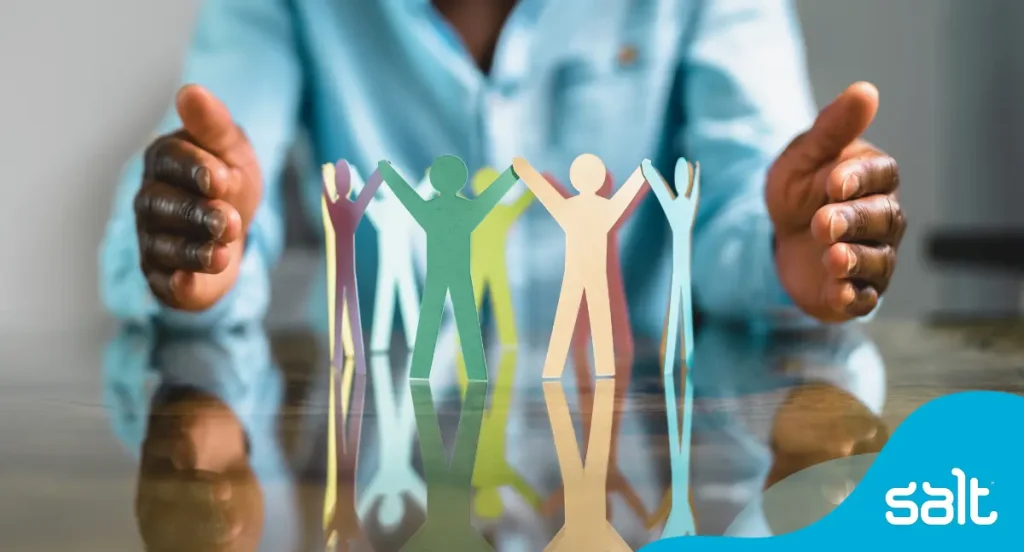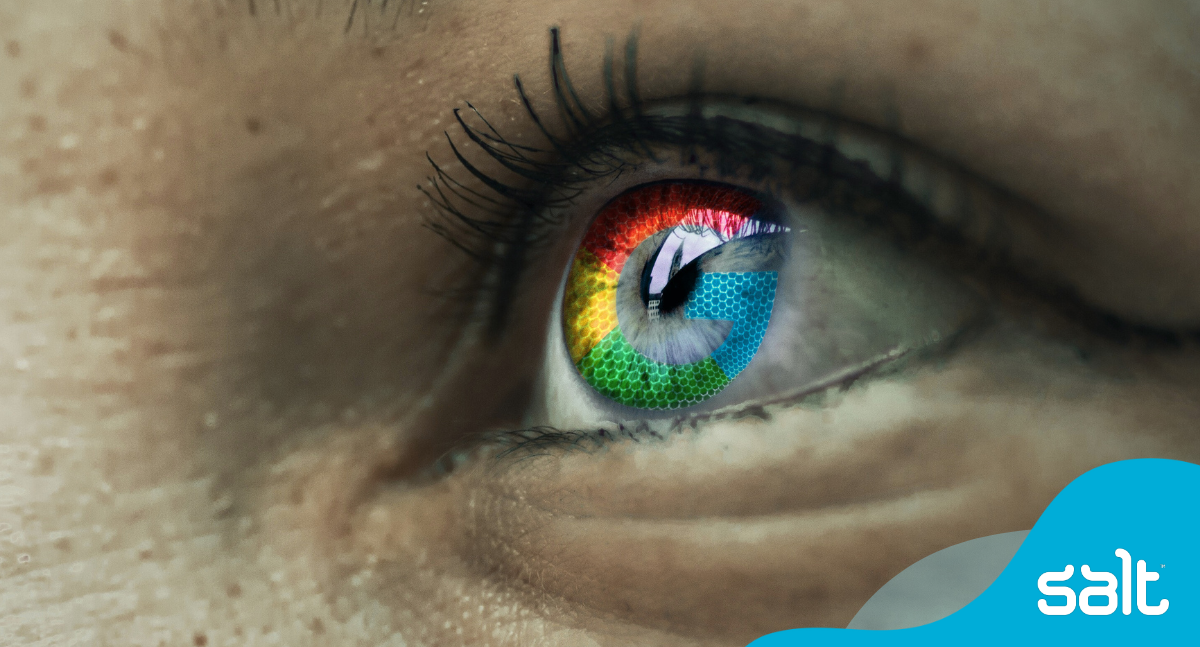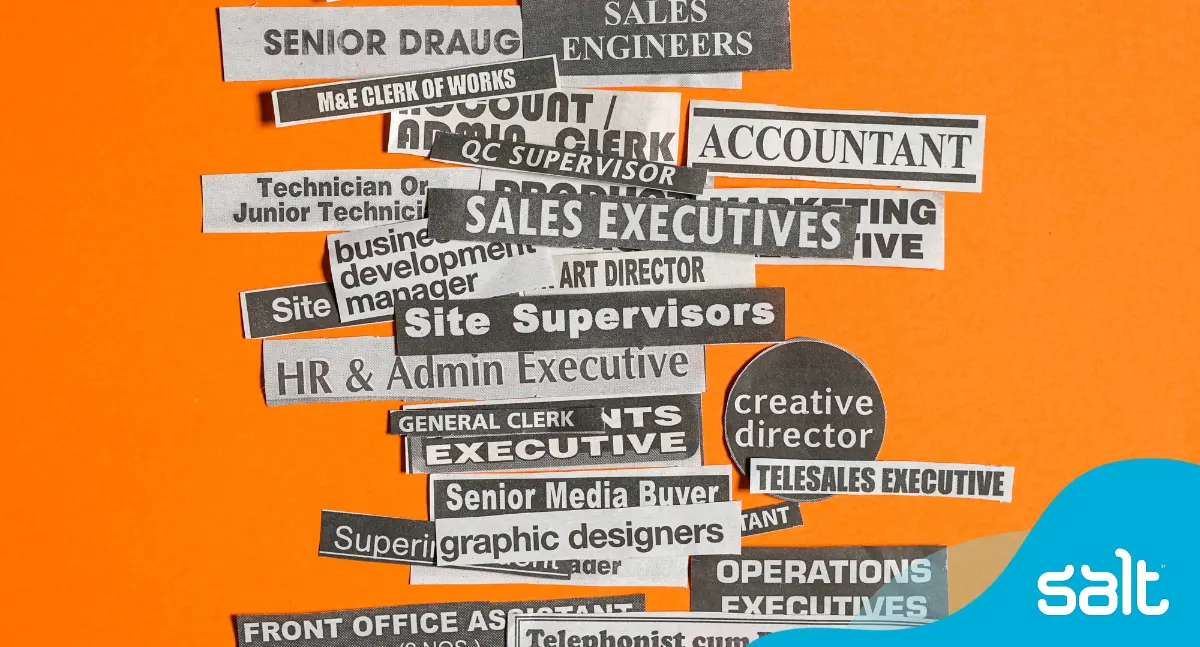
It’s not enough to talk the talk when it comes to promoting equality and diversity in the workplace. Here’s how to make actionable and sustainable changes to support your existing workforce and attract and retain diverse talent.
Inclusive workplaces are crucial. Not only ethically, but also for your business to succeed. Candidates will ask about how you promote equality and diversity. Your attrition and ethos will depend on your inclusivity and the actions you take to improve today and secure a better future for your workforce tomorrow.
In this guide, we showcase why EDI in recruitment is crucial, what different terms mean and why those definitions matter, what barriers exist to different groups in different places, and successful examples of initiatives, before sharing expert advice on 3 impactful changes you can make today.
Equality, diversity and inclusion in hiring and recruiting
At work, it’s important to treat everyone fairly and give everyone equal opportunity.
Employees can come from different backgrounds and each have different experiences, so it’s important to respect and include each of them as the individuals they are.
Discrimination can happen indirectly or directly, but creating an inclusive workplace helps prevent it. This can be done by offering flexible work options, focusing on skills rather than resumes, investing in employee development, structuring interviews fairly, and sharing diversity, equity, inclusion, and belonging stories with your external and internal audiences..
Promoting equality and diversity in the workplace is the process of preventing institutional and interpersonal discrimination against employees who are minorities in your workforce.
Some of the characteristics that are included in equality acts include:
- Age
- Disability
- Gender reassignment
- Marriage
- Pregnancy
- Race
- Religion
- Gender
- Sexual orientation
Every person is different and should be treated as an individual in their own right, regardless of what characteristics they might have.
This is particularly important as an individual might have one or many protected characteristics, which will change the stereotypes and adversity they may face in an environment, as well as the support and solutions that will most benefit them and support them at work.
It’s crucial to ensure that hiring processes are fair and unbiased, to stop acts of discrimination and interrupt unconscious bias as much as possible. Taking a closer look at the hiring process before implementing DEI policies can help in achieving this goal.
Indirect and direct discrimination during the hiring process
Indirect discrimination is when something you practice inadvertently and disproportionately affects individuals with protected characteristics. For example, posting a job advertisement that includes a requirement for a minimum number of years’ service, depending on the circumstances, may constitute indirect age discrimination against younger workers.
Direct discrimination involves treating a person unfavourably due to a protected characteristic. This definition now includes protection based on association (knowing or being close with someone with that characteristic) and perception (being perceived as having that characteristic, whether or not the individual actually does), extending to age, disability, gender reassignment, sex, and pregnancy and maternity.
For instance, not employing a woman due to the assumption that she may start a family is an example of direct discrimination. Similarly, not considering a disabled person without assessing whether they meet the selection criteria and whether reasonable adjustments can be made is also a form of direct discrimination. Not hiring someone because of their perceived sexual orientation is also considered direct discrimination.
Any discrimination in hiring can also leak into the workforce culture and impact it in a negative way such as bullying or harassment because of someone’s gender, or ostracising people who share certain physical attributes.
Acknowledging the difference between equality and diversity
Equality means equal opportunities, compensation, workers’ rights, and workplace treatment are provided to your employees, no matter their identity.
Diversity is the process where the differences between individuals are acknowledged, embraced, and accommodated for.
By acknowledging differences you will help make your working environment more accessible to minority groups, but also to anyone.
There are both invisible and visible barriers to equality, and these can develop over time as well as be something an individual is born with. Supporting parents in the workplace, for example, is not only beneficial for your employees but also for you as an employer as well. By considering how you can support parents and carers, you can expand your talent pool significantly.
By taking active steps in reviewing your equality policies and embracing diversity, you won’t miss out on potential candidates who bring valuable skills and experiences to the table, and you’ll increase workplace motivation and productivity overall.
How does DEI affect the culture of your business?
A study by Globoforce and WorkHuman found that employees who receive regular recognition are:
- 5x more likely to feel valued and appreciated
- 6x more likely to invest in their work
- 7x more likely to stay with their current employer for at least another year.
Creating a company culture in your office that reflects the morals and worldviews of your employees will increase their happiness at work.
This in turn will help support retention and for hiring and recruiting will help strengthen your cultural value to new prospects.
If your workplace does not take steps to acknowledge and improve diversity and equality in your day-to-day operations today, your employees will begin to feel ostracised and may decide to leave. They, in turn, will tell their peers.
You could then find yourself struggling to attract and retain not just minority applicants in any future openings at your company, but any applicants overall.
The task of achieving global equality and implementing national diversity and equality policies can be quite challenging, as there is no clear roadmap to follow because there is no one-size-fits-all solution.
No company, and indeed no individual, are the same. You will need to tailor what works for your business and your employees, both current and future.
Case studies for successful DEI do exist!
Certain practices have been proven effective, such as policies that prohibit discrimination, like affirmative action.
In South Africa, a government initiative called BBBEE (Broad-Based Black Economic Empowerment) has been instituted to encourage workplace diversity in the wake of decades of forced racial segregation. By fiscally rewarding businesses that hire a certain quota of previously racially disadvantaged employees, BBBEE works to stimulate the economy in minority communities and enforce integration between groups that were previously not allowed to interact before.
In Australia there are still instances of prejudice and discrimination despite the country being home to over 270 different ancestries. However, there are laws in place to combat this issue. The Workplace Gender Equality Act, for example, mandates non-public sector organisations to report annually on gender equality, while the Racial Discrimination Act prohibits discrimination based on race, colour, nationality, or ethnic origin. Employers are required to provide a workplace that is free from racial discrimination. Additionally, the Disability Discrimination Act prohibits discrimination based on disability and mandates that employers accommodate employees with disabilities.
In Sweden they have some of the most progressive policies for LGBTQ+ rights in the world. Same-sex marriage has been legal since 2009, and the country has implemented several other policies to promote LGBTQ+ rights, such as anti-discrimination laws and initiatives to combat homophobia and transphobia.
How can you take these policies into the workplace?
By providing diversity training on cultural awareness and sensitivity, as well as teaching employees how to identify and report non-inclusive behaviour, can help you on the path to a more inclusive workplace.
How can I promote inclusion when hiring now?
Fair recruitment and hiring practices, such as setting targets for hiring employees from underrepresented groups, using blind screening processes to remove bias, ensuring a diverse interview panel, and ensuring job descriptions and requirements are inclusive, can also be of great help.
So can offering flexible work arrangements, such as telecommuting, flexible hours, or job sharing to effectively accommodate the needs of employees from diverse backgrounds.
Here are a few ideas to help you make actionable and sustainable changes to your hiring practices today:
1. Welcome a diverse pool of candidates
Whether you’re hiring internally at your company or decide to have assistance from recruiters such as Salt, make it clear that you welcome a diverse pool of candidates during the recruitment process.
This means more than just a single female candidate or minority candidate. Here are practical steps you can take to improve your hiring processes and counter biases in your workplace.
2. Establish objective criteria ahead of time
Making a decision based on who’s “a good culture fit” or “the right fit for the team” may put your company at risk of being biased.
Often minority candidates will feel the need to code-switch and adjust the way they interact in an interview in order to come across favourably. This is an unfair disadvantage if they display the same mannerisms as other candidates. An effective way to counteract that is to create a matrix to share with your recruiters or hiring managers and to mark every candidate on the same matrix.
The matrix is skills and competencies based directly on the requirements needed for the job role. By clearly outlining ahead of time what unique skills and experiences you are looking for in a candidate it can help the company unfairly discriminate against any minority candidates or groups.
Follow our step by step guide to re-thinking and writing job specifications.
3. Diversify your company’s decision-makers
A matrix alone isn’t sufficient unless it can truly hold your company accountable and aware of inclusive hiring. Even well-meaning and experienced allies cannot fully understand or empathise with another identity and will be susceptible to implicit biases that they may not even be aware of.
A great way to prevent this from happening is to include different team members in your interview process and be open to hearing their feedback even if it’s different from some of the other members on the recruitment team.
Hiring? Salt connects you to outstanding top talent worldwide
If you’re interested in hearing about how Salt’s top talent recruitment experts around the world can help with your hiring right now, get in touch. Click below to contact the closest Salt team to you!
- Australia
- Canada
- Belgium
- Europe
- Hong Kong
- Malaysia
- Middle East and North Africa
- Netherlands
- New Zealand
- Singapore
- South Africa
- United Kingdom
- United States
Keep up with Salt’s top talent job market insights and hiring advice! You can keep in the loop by following us on. LinkedIn, YouTube, Facebook, Instagram, and Spotify.



